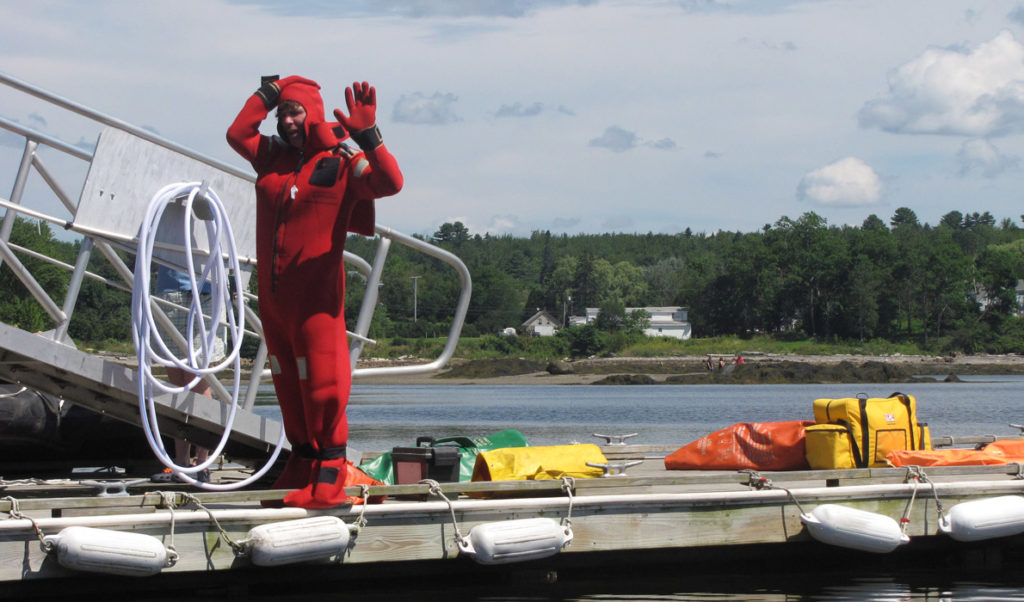By Xiaoxi Wang
If you think the assertion that the most dangerous job in the U.S. can be found in New England sounds… well, a little fishy, you’re right. Commercial fishing has been considered the second most dangerous occupation in the U.S. for decades.
In 2014, out of every 100,000 active fishermen in the U.S., 81 died due to accidents at sea. The number is striking considering that the average fatality rate of all industries is roughly 3.3 per 100,000 workers.
Fortunately for Tyler Robillard and his family, he knew what to do in an emergency, and it saved his life. While setting more gear on board the boat, a lobster trap came off the top and knocked Robillard into the water. Luckily, he had just attended a safety-training course and the steps he learned were so fresh in his mind that he started them without thinking.
He inflated the PFD, regulated his breathing, grabbed the closest part of the boat and finally got back on board safely. After the accident, Robillard was grateful for the safety trainings.
“Who knows what would have happened if we didn’t go to the course,” he said.
Robillard’s story is one among many that shows the importance of providing fishermen with information on how to handle emergencies at sea.
To help them gain access to such information, MIT Sea Grant, Fishing Partnership Support Services and Harvard School of Public Health developed the RESCUES manual (Response to Emergencies at Sea and to Communities Under Extreme Stress). This manual presents a compilation of best practices for fishermen, their families and communities, with information on safety preparation, equipment instructions, emergency responses, recovery, insurance and contact information for a variety of social services. Recommendations and anecdotes in the manual are the result of over 30 first-person interviews with fishermen, organizations that support fishermen, captains and boat owners. The manual also consolidates relevant and useful information from many different sectors including state and local emergency rescue organizations, the U.S Coast Guard and community websites.
You can download the manual online at http://fishingpartnership.org/wp-content/uploads/2016/03/Rescue_update.pdf.
Seeing its potential to benefit a lot more people, MIT Sea Grant decided to expand the manual to coastal communities in Maine. While much of the existing information is applicable to Maine, as the pundits say, “the devil is in the details.”
Maine has a significant population of lobster fishermen. To address their needs, specific information will be included on lobster fishing, such as: preparation techniques (safety equipment, vessel safety checks, training and safety practices, etc.), potential dangers at sea, signs of danger, common injuries, and actions to take during an emergency.
Similar to the Massachusetts version, as much information about local services, fishing organizations, emergency phone numbers, etc. as possible will be included to make the manual relevant and tailored to the Maine fishing population.
To fulfill the demand of as many coastal communities as possible, we need help. Do you have any information that could help lobster fishermen? Do you know someone who is knowledgeable? Have any general comments or suggestions? Please do not hesitate to contact Dr. Madeleine Hall-Arber at arber@mit.edu. Hall-Arber is a Marine Anthropologist at MIT Sea Grant, who has been working with New England fishermen for over 25 years.
On behalf of the Fishing Partnership Support Services, Harvard School of Public Health, and the MIT Sea Grant, we would like to thank you in advance for your time and valuable input. Please contact us at arber@mit.edu.
Xiaoxi Wang is an undergraduate student at MIT and a researcher at the MIT Sea Grant.





